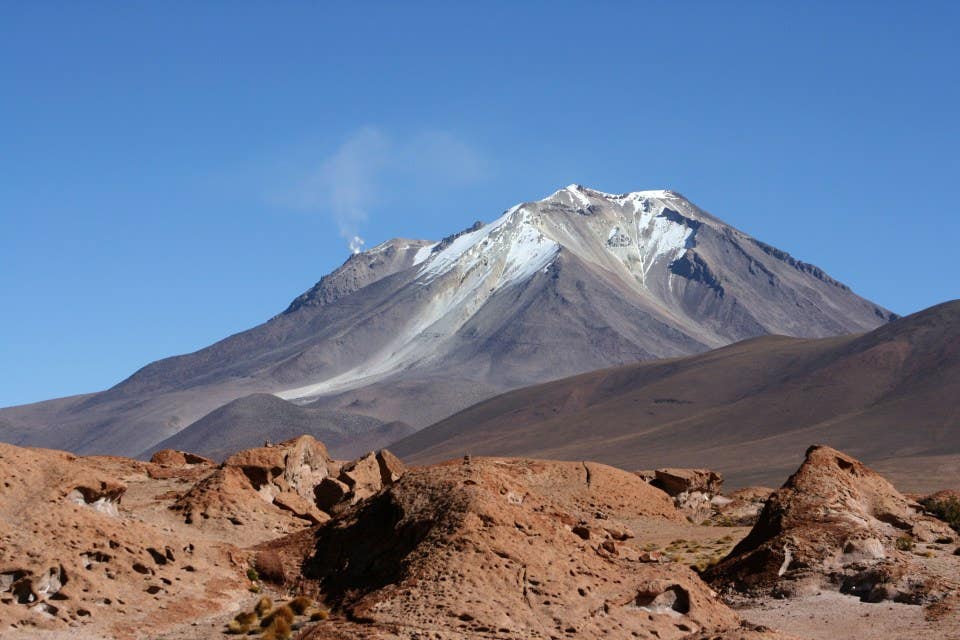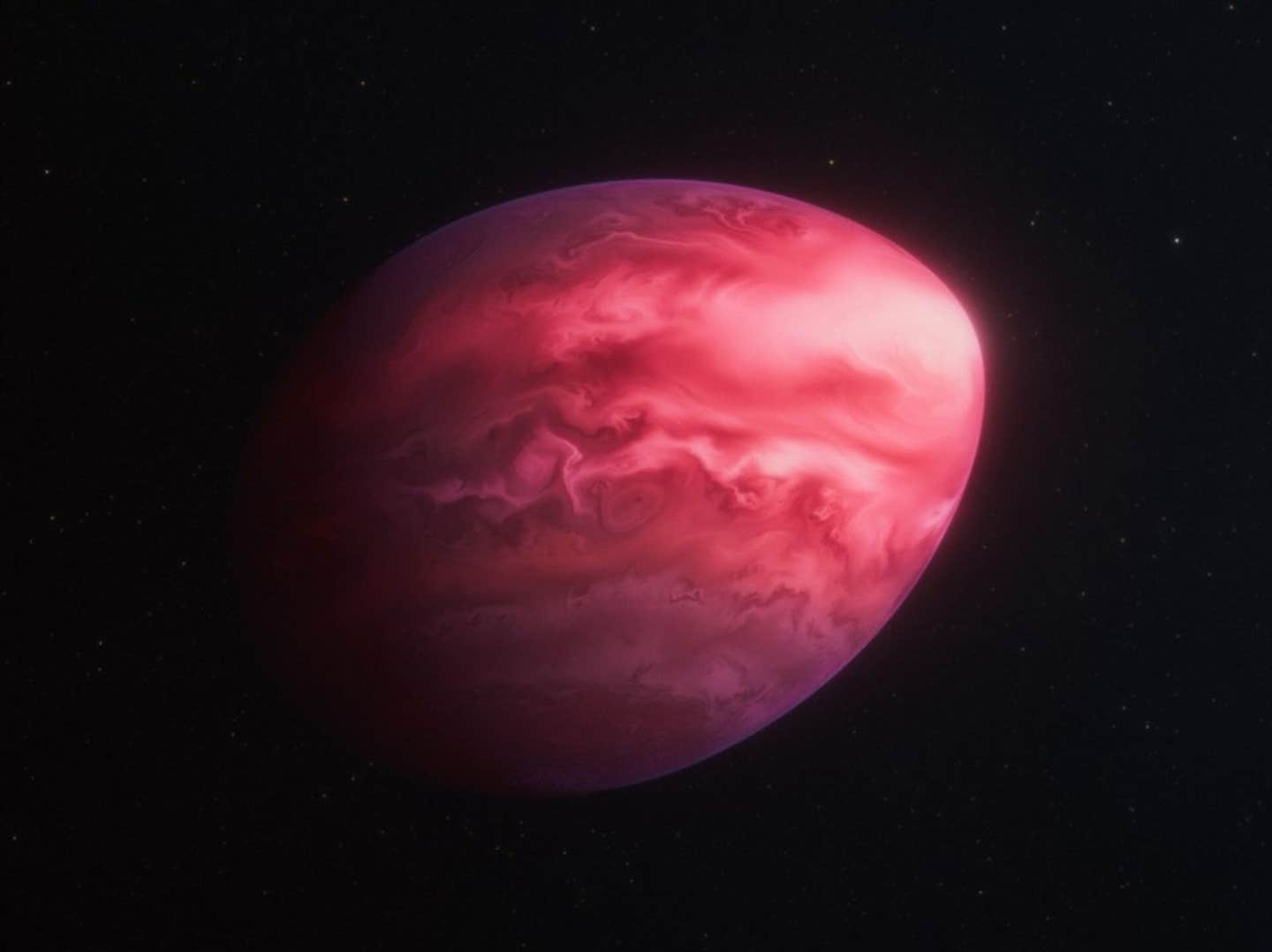New research shows why Bolivia’s ‘Zombie’ volcano is stirring after 250,000 years
Although its last eruption happened around 250,000 years ago, Uturuncu refuses to rest quietly. Earthquakes ripple beneath its surface. Gases leak into the air.

A new international study shows that Bolivia’s Uturuncu volcano’s unrest is driven by fluid migration. (CREDIT: Alamy)
Deep in Bolivia’s Central Andes, the volcano known as Uturuncu rises. Although its last eruption happened around 250,000 years ago, Uturuncu refuses to rest quietly. Earthquakes ripple beneath its surface. Gases leak into the air. The ground itself warps into a strange “sombrero” shape, with the center lifting while the edges sag. These signs have puzzled scientists and worried nearby communities for years.
Understanding why a volcano acts restless long after it stops erupting is not easy. Researchers need to uncover what is happening deep inside the Earth. Now, a new study brings the clearest view yet of what stirs beneath Uturuncu.
A team of scientists from China, the UK, and the USA have mapped the volcano’s hidden inner workings by blending seismic imaging, physics models, and rock composition analysis. Their results, published in the journal PNAS, explain Uturuncu’s strange behavior — and offer some reassurance.
A Volcanic Puzzle Hidden Beneath the Surface
Unlike a volcano erupting with lava and ash, Uturuncu’s trouble comes from deep movement that is hard to see. Past studies showed that it sits above the Altiplano-Puna Volcanic Complex, the largest known body of magma in the Earth's crust. An active hydrothermal system also connects that magma to the surface, suggesting a complicated underground network. But until now, no one had figured out how fluids and gases were moving through this system.
Volcanic plumbing systems are rarely simple. Inside them, molten rock, gases, and superheated fluids swirl and shift. Knowing where and how these materials travel is crucial for predicting future eruptions. The mystery of Uturuncu’s unrest demanded a much sharper look at its underground structure.
The international team tackled the challenge by studying more than 1,700 local earthquake events. Seismic waves from these quakes travel through underground materials at different speeds, depending on what they pass through. By measuring these changes, researchers built a three-dimensional picture of the upper crust below Uturuncu. This method, called seismic tomography, works much like a CT scan that doctors use to look inside a body.
Related Stories
But imaging alone wasn't enough. To fully understand the volcano’s anatomy, scientists combined their seismic findings with rock physics models and petrological data. These tools helped show not only the structure but also the materials inside — revealing whether fluids or gases occupied key areas.
Mapping the Hidden Pathways
Their detailed analysis showed something remarkable: pathways where geothermally heated fluids rise through the crust toward the surface. These migrating fluids gather beneath the crater, creating a shallow gas accumulation zone. The collected gas and fluids are responsible for the ground deformation seen at Uturuncu’s surface.
This discovery explains the ongoing unrest without suggesting that a major eruption is about to happen. Although the volcano remains active beneath the surface, the researchers found no signs of a large buildup of eruptible magma. Instead, the slow movement of fluids and gases through the rock seems to be pushing and pulling the ground above.
Professor Mike Kendall from the University of Oxford emphasized the significance of the approach: “I am very pleased to be involved in this truly international collaboration. Our results show how linked geophysical and geological methods can be used to better understand volcanoes, and the hazards and potential resources they present.”
Professor Haijiang Zhang from the University of Science and Technology of China agreed, pointing to the teamwork behind the findings: “Understanding the anatomy of the Uturuncu volcanic system was only possible thanks to the expertise within the research team. This enabled us to combine various advanced geophysical imaging tools with modelling of the rock properties and their interactions with fluids.”
Lessons Beyond Uturuncu
The research has broader implications than just explaining Uturuncu’s behavior. Professor Matthew Pritchard from Cornell University noted that similar techniques could be applied elsewhere. "The methods in this paper could be applied to the more than 1400 potentially active volcanoes and to the dozens of volcanoes like Uturuncu that aren't considered active but that show signs of life — other potential zombie volcanoes," he said.
Zombie volcanoes, like Uturuncu, present unique challenges. They often appear dormant on the surface, but deep within, processes continue to simmer. Traditional ways of assessing volcanic risk may overlook these hidden signs. With combined tools like high-resolution seismology, rock physics modeling, and petrological studies, researchers can better predict the behavior of these mysterious systems.
The study demonstrates how modern technology offers new ways to peer inside the Earth without relying on surface clues alone. For communities living near these hidden giants, better understanding means better preparedness.
Future of Volcanic Hazard Prediction
Although the risk of an eruption at Uturuncu remains low, monitoring must continue. Volcanoes can change quickly, especially when gases and fluids move in new ways underground. This study provides a strong framework for future research.
By refining seismic imaging techniques and integrating more detailed rock and fluid analyses, scientists hope to apply their approach globally. Their goal is not only to predict eruptions but also to better understand the geothermal systems that could offer new energy resources.
As Uturuncu shows, a volcano’s quiet surface can hide a restless heart. Thanks to the work of researchers across three continents, you now have a clearer window into what lies beneath — and a reminder that science is constantly pushing deeper into the unknown.
Note: The article above provided above by The Brighter Side of News.
Like these kind of feel good stories? Get The Brighter Side of News' newsletter.



